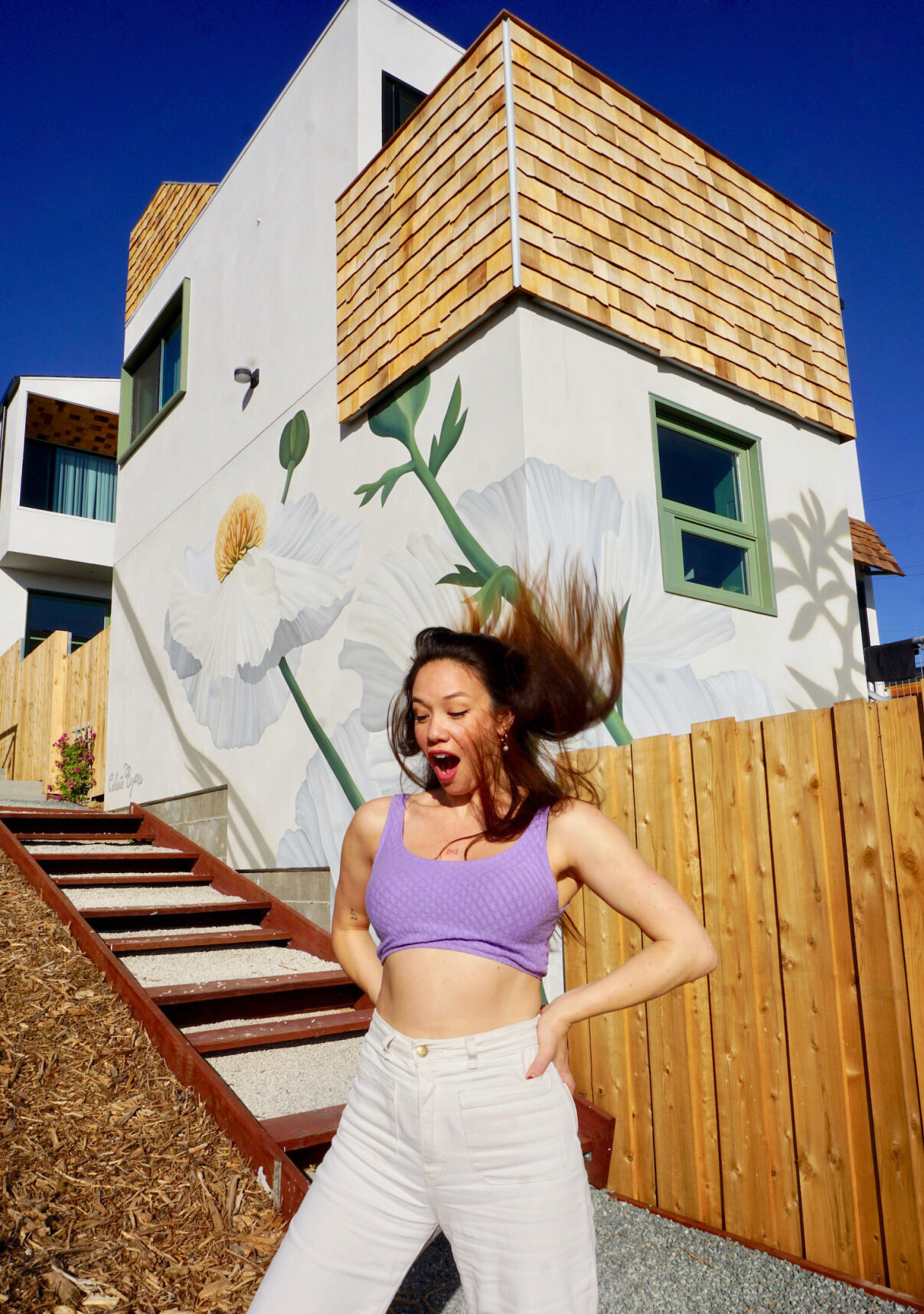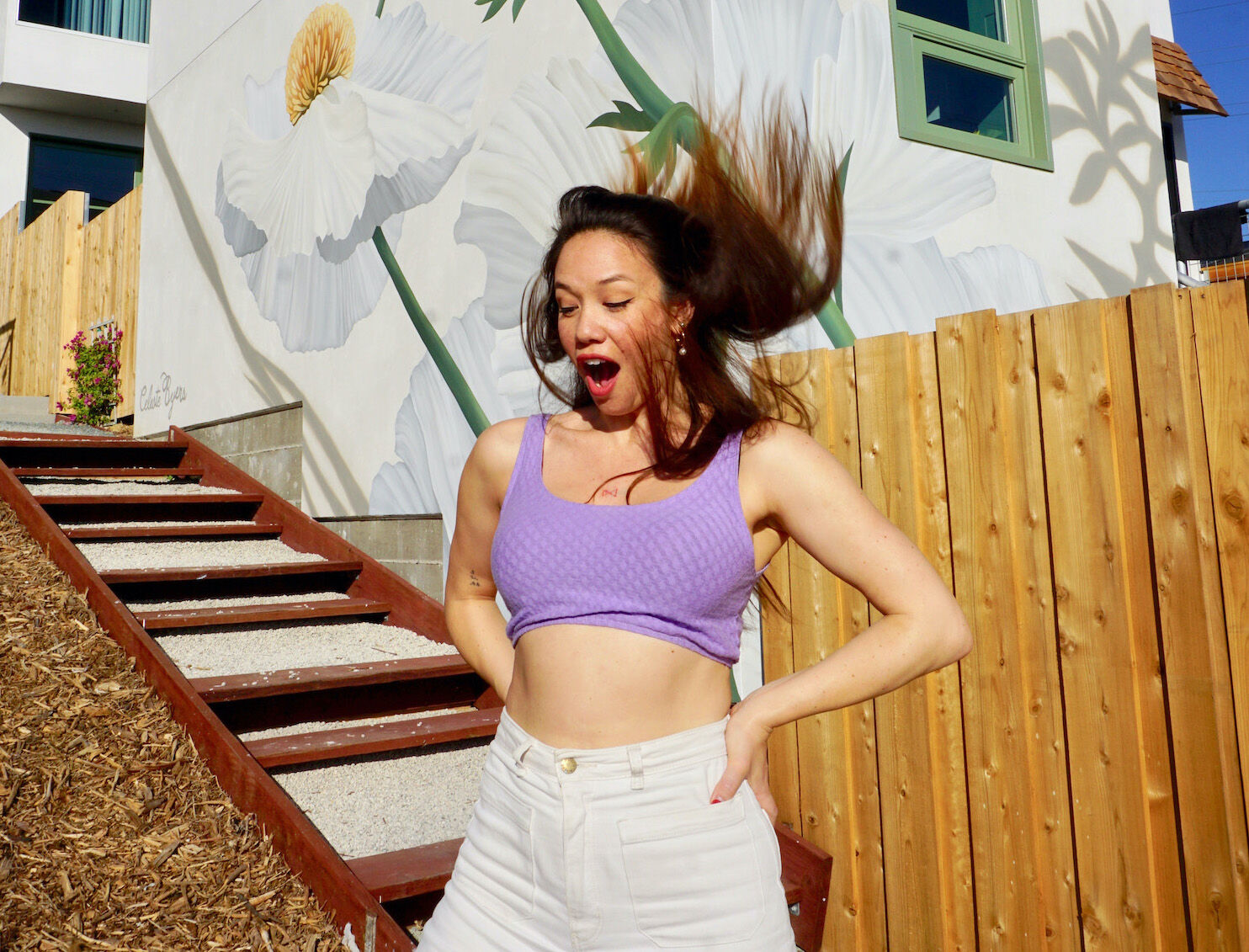
Celeste Byers – Tastemaker
AGE: 32
NEIGHBORHOOD: Golden Hill
JOB: Muralist and illustrator
Sit Celeste Byers in front of a blank wall and in less than five minutes, the San Diego–based artist can think up something pretty magical to paint on it. Picture nature in bloom, bright colors, expressive faces and patterns, joy bursting off brick. Byers is known for making a statement wherever she sets her paintbrush or pen, in the large-scale murals she’s created around the globe or the illustrations she churns out in her sketchbook. No matter the medium, Byers’s work is an extension of the environment where it’s found. She takes inspiration from the native flora and people who live where she works—an easy feat when your art has taken you to seven different countries (Sri Lanka, Vietnam, and Mexico, to name a few).
But even at home, there’s still plenty to discover.
“I’ve lived here most of my life, but I’m still finding things to get inspired by,” she says. “I love learning about different cultures and scoping out neighborhoods like Convoy or Barrio Logan.”
Byers completed her first mural in 2009 on her dad’s airplane hangar, a serene composition of humpback whales wading through kelp beds. In the time since, she has completed over 75 more murals and worked with clients big and small, from local businesses to global brands like Amazon, Lyft, and Sephora. Over the 13 years she’s been painting, she’s seen and been a part of the progression of contemporary mural art—from the rise (and fall) of selfie-bait murals to now, when she says there’s a greater appreciation for art with a story.
“When I’m painting a mural, it’s less about me and more about the community it’s placed in,” she says. Look to her work in Cancún with artist Aaron Glasson for example. Doña Margarita en el Centro de Tiempo covers a four-story apartment building, depicting a Mayan woman who lived there for 20 years, where three generations of her family still live.
“Exterior murals have a cool way of being a part of the landscape, a part of the community it resides in,” says Byers. The colors she chooses, the patterns, the emotion—she says it’s all sourced to reflect the identity of the community back onto itself. And it all starts with sitting and staring at a blank wall.


















